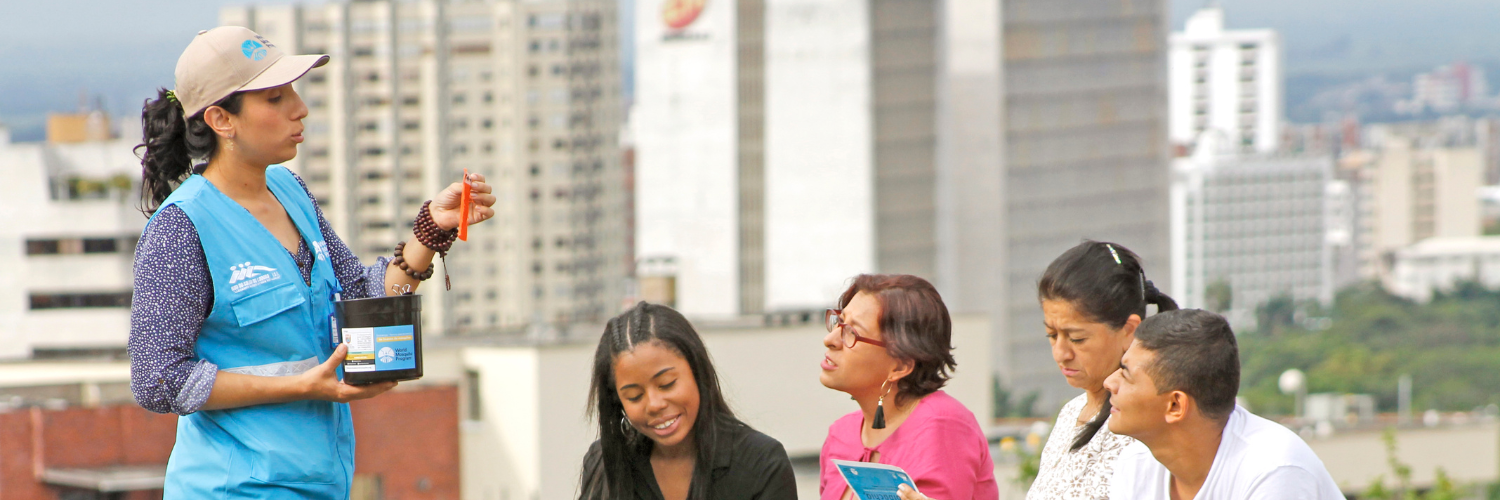Community Reference Groups – A Case study from Yogya
In any community engagement activity, one of the best project insights comes from those which are informed by the diverse perspectives of the broad cross-section of the community. This is applied to the WMP by establishing the community reference group (CRG) to oversee the engagement activity, as outlined in the Public Acceptance Model--our framework for engagement.
Community Reference Group in Yogya
The community reference group in Yogyakarta was established by piggy-backing the current community representative council that exists in each rural and urban village named Lembaga Perwakilan Masyarakat Desa or Kelurahan (LPMD or LPMK) -- Village Community Empowerment Institution. The LPM seats at the village level and consists of 10-20 members per village and elected once in every 5 years.
The LPM partners with village governments in formulating village level priorities, promoting participation and planning, and implementing development programs.
They are not paid officers, but receive an incentive from the government from15-50 AUD/month depending on the position in the structure.
In case the LPM member is not diverse enough, other community groups such as a women’s group (PKK), or youth group (Karang Taruna) would be added.
Their roles
WMP Yogyakarta formed a referral group to be able to identify key social values, advise on potential issues that may affect the relation of the community to the project and possible solutions. They also provide advice on future engagement activity that could be undertaken by project with community and stakeholders. However, they are not decision making bodies, more to advisory roles.
As the project develops, members of this group are often called on as resource persons for other communities.
How did we engage them?
It was started with a series of consultation processes to formulate the best way to engage the community, how to listen and respond to any key issues raised by them. The project set up a mechanism for communicating with them through regular face to face meetings and exchange the information through Whatsapp groups. The LPMs work on a voluntary basis, they would receive a small amount of travel allowance (around 5-10 AUD) only when they attended the WMP organised meetings.
The Case Study
To start with, the whole Yogya release was not considered as public health intervention, but research. The first phase of research was in the District of Bantul and Sleman covering around 9,000 community members aimed to assess the Wolbachia establishment in Aedes Aegypti in the population.
The next phase, the research carried out in the city of Yogya and the objective was to with the aim of measuring the efficacy of Wolbachia-infected Aedes aegypti deployments in reducing dengue incidence in an endemic setting. As they were considered as study, consent from the community is required.
Back in 2013, in Sleman, we successfully obtained more than 90% of the individual consent. During the project preparation, the CRG played an important role in advising ways to raise awareness and get support from the community. When we had a small number of households opposing the release; they advised and facilitated by forming a conversation with the communities. It was decided not to release the mosquitoes in the households who had reservations, while at the same time to continue to release in the area where people showed support.
Later in 2014, the project set up two CRGs in Bantul, the second WMP pilot deployment area. Unlike Sleman, the consent applied in Bantul was obtained at the collective level (neighbourhood group/RT).
Following the success of trials in Sleman and Bantul, the project expanded to Yogya City and targeted a population of more than half-million in 2016. The project established 47 CRG’s across Yogya at the Kelurahan level. Still, it was riding on the existing LPMKs. At this stage, we have to obtain collective consent at the Kelurahan level as a measure of community support for the project deployment. The Kelurahan leadership advised us to have the LPMKs signed the informed collective consent on behalf of the community. Prior to the consent, a series of consultations were organised to ensure that they have an informed decision.
Not long after that, the LPMKs took part in the public randomisation to select the control and intervention area of the randomized control trial (RCT). The LPMKs also had helped us to communicate the result of randomisation to the community by using our key messaging.
The Community reference groups in Yogyakarta are unique and rather adopt the current practice of community representativeness in the local context rather than creating the new ones. Without community participation and LPMs involvement it would not have been possible to achieve the project goal, releasing mosquitoes in the community.

